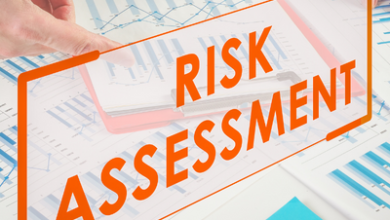Synchronizing Organizational Goals with Talent Management: Exploring the Multifaceted HR Planning Process in Australia

The alignment of corporate goals with personnel management is becoming a critical task in today’s business environment, and it is essential to the long-term success and competitive advantage of businesses in a variety of industries. Deeply exploring the complex process of the HR Planning Process in Australia, this complex undertaking is especially relevant in the Australian context, where changing labour demographics and market dynamics provide possibilities as well as obstacles.
1. Being Aware of the HR Planning Complexities
Australia’s HR planning process is a complex system that requires careful attention to detail and thoughtful decision-making because of the way that strategic foresight, operational agility, and human capital optimisation interact. This process is essentially about aligning organisational goals with the ever-changing needs of hiring, developing, and retaining personnel. It is supported by a thorough comprehension of internal resources, external market dynamics, and regulatory requirements.
2. Dissecting the Workforce Development Nuances
Workforce development is being seen as a critical component of HR strategy, alongside talent acquisition and retention. It emphasises the need to develop current talent pools, promote ongoing education, and create an innovative and flexible culture. Organisations must adopt agile learning frameworks, personalised development pathways, and collaborative knowledge-sharing platforms in the Australian context, where demographic shifts and technological advancements are redefining job roles and skill requirements. This will enable employees to reach their full potential and be empowered.
3. Making Well-Informed Decisions by Using Analytics and Technology
In a time characterised by digital disruption and data proliferation, the efficient application of technology and analytics becomes a fundamental component of Australia’s HR planning process, enabling organisations to derive actionable insights, allocate resources optimally, and manage risks associated with talent. HR professionals can anticipate talent trends, think beyond traditional boundaries, and plan proactive interventions to take advantage of opportunities that may go unexplored and address possible obstacles by utilising artificial intelligence-driven platforms, predictive modelling techniques, and advanced analytics tools.
See also: Smooth Sailing: Top 5 Platforms For An Easy Online Shopping Journey
4. Developing Cooperative Alliances For Tactical Alignment
Interactions between industry associations, external service providers, and internal stakeholders form the foundation of Australia’s HR planning process; they allow for the sharing of best practices, the sharing of expertise, and group problem resolution as well as knowledge exchange. Businesses can improve their strategic agility and adaptability in a dynamic business environment by forming symbiotic partnerships with academic institutions, trade associations, and governmental bodies. These partnerships provide access to a variety of talent pipelines, regulatory insights, and industry benchmarks.
5. Managing the Difficulties of Regulatory Compliance
Regulatory compliance issues, which span from diversity requirements and workplace health and safety standards to labour laws and employment rules, provide a multitude of obstacles for organisations operating in Australia’s complex HR planning landscape. In order to mitigate legal risks, uphold ethical standards, and protect organisational reputation, HR practitioners need to deploy strong compliance monitoring mechanisms, develop a nuanced understanding of legislative frameworks, and engage in proactive dialogue with regulatory authorities.
6. Accepting Agile Approaches to Talent Management
The HR planning process in Australia is complex, and part of its intricate design is the requirement for organisations to adopt agile talent management practices. These practices help them develop flexible workforce strategies, dynamic talent pipelines, and adaptive capabilities to help them deal with technical disruption and market fluctuations. Organisations that cultivate a culture of experimentation and agility are better equipped to quickly adapt to changing market conditions, capitalise on changing skill requirements, and predict emerging talent trends. This helps them maintain their competitive advantage and resilience in an unprecedentedly complex and uncertain era.
7. Creating an Environment that Values Constant Development
The development of a continuous improvement culture—one in which experimentation, learning from mistakes, and adaptation become embedded in the organisational DNA—must be given top priority by organisations striving for HR excellence. This calls for a comprehensive strategy that includes organisational learning, leadership development, and employee empowerment programmes with the goals of understanding failure as a springboard for creativity, encouraging information sharing, and cultivating a growth mentality. Businesses may develop a feeling of responsibility and ownership, maximise the potential of their people resources, and achieve long-term performance excellence in all areas of their business by cultivating a culture of continuous improvement.
Conclusion:
In summary, the HR Planning Process in Australia is a complex process that is distinguished by the complex interaction of strategic planning, operational nimbleness, and human resource optimisation. Organisations can steer towards HR excellence and unleash the full potential of their human capital, achieving sustainable growth in a highly competitive and dynamic business landscape, by embracing the imperatives of talent acquisition, retention, workforce development, diversity and inclusion, technology adoption, collaborative partnerships, and regulatory compliance.
Organisations must continue to be resolute in their efforts to cultivate an innovative, resilient, and inclusive culture where human capital is recognised as the primary driver of both competitive differentiation and organisational success as they manoeuvre the complexities of Australia’s HR planning process. Prioritising ethical stewardship, operational excellence, and strategic alignment helps organisations break through traditional barriers, spark revolutionary change, and become leaders in the rapidly changing fields of people management and organisational performance.



